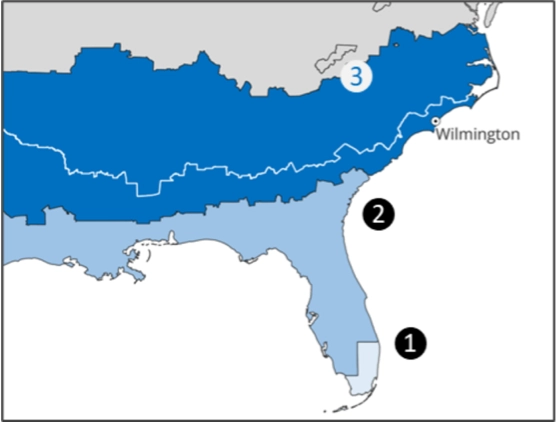About the Study
The ERRP project compares construction costs and performance impacts of residential building practices as defined by successive versions of the energy code and advanced performance initiatives. To collect this data, we will install advanced monitoring systems in dozens of homes in our coastal hot-humid climate to understand how they perform under many different design, material, climate, and other conditions. We’re going to see how the factors that we’ve all learned about in school and read in lengthy code books actually matter in comparable homes. Findings will offer an objective, data-driven understanding of what factors are most impactful when evaluating commonly used methods and materials.
Scope & Construction Type
- 30 single family homes
- Approximately 1,500 s.f. with attached garage
- Slab-on-grade
- Wood-framed 2×4 construction
- Practices spanning 2015-2024 energy codes and initiatives such as Zero Energy Ready
Location & Climate
- North Carolina: Greater Wilmington Area
- Warm-humid climate:
- 20 inches of annual precipitation;
- A 67°F or higher wet bulb temperature for 3,000 or more hours during the warmest 6 consecutive months of the year;
- A 73°F or higher wet bulb temperature for 1,500 or more hours during the warmest 6 consecutive months of the year
- Hurricane-prone region: all 30 homes located with 10 miles of the Atlantic Ocean

Industry Education
The ERRP initiative represents a novel collaboration between Built Environments, home builder, and developer. It not only tracks actual costs and performance gained; it also chronicles a home builder’s journey into enhanced construction practices and improved materials. Lessons learned will be shared with the greater industry through engaging videos, white papers, and social media.
Data Collection
- Monthly energy use over a 2-to-5-year period
- Blower door tests at pre-drywall and completion
- Detailed tracking of material and labor costs
- Remote monitoring of temperature, relative humidity and wood moisture content
- Independent HERS rating
- Energy and hygrothermal modeling
Project Phases

Phase 1
Three 'control' home will be constructed using the 2018 NC Energy Conservation Code (amended 2015 IECC)

Phase 2-4
Subsequent construction will integrate increasing performance practices as aligned with successive energy codes

Phase 5
The study will culminate with homes built to DOE's Zero Energy Ready Home standards using Version 2 guidelines.